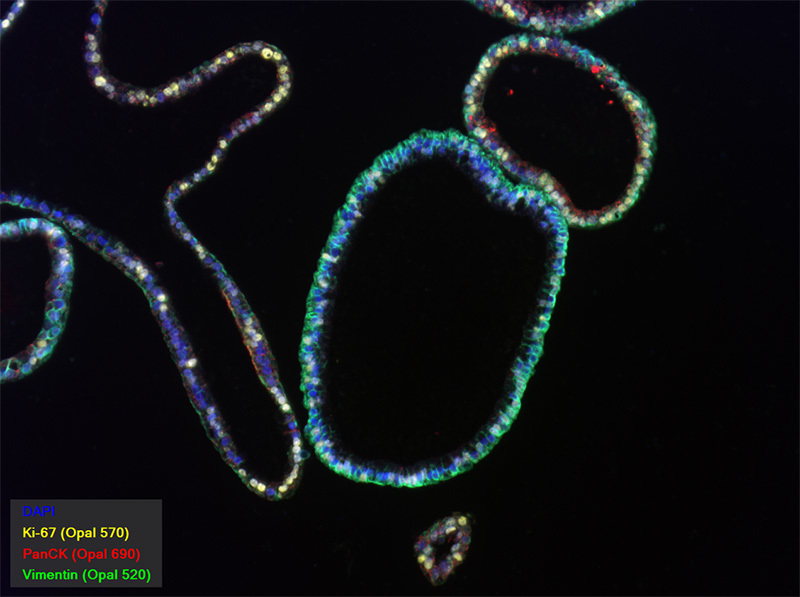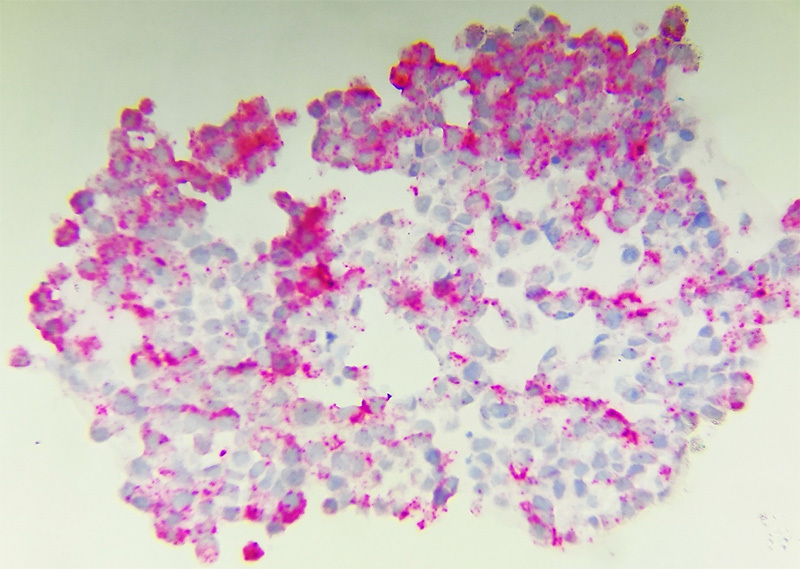
Gastrointestinal Organoid Paraffin Section Multiplex Immunofluorescence Detection

Tumor Organoid Paraffin Section Multiplex Immunofluorescence Detection

Organoid samples can simulate the morphology and function of human tissues, organs, or tumors, and can be obtained through in vitro culture. They also possess a variety of complex cellular structures and are increasingly drawing attention in the field of biology. In December 2021, the Center for Drug Evaluation (CDE) of China released the document "Technical Guidance for Nonclinical Research and Evaluation of Gene Therapy Products (Trial)," which explicitly stated that organoids can serve as an alternative model to animal models in nonclinical studies. In the document "Technical Guidance for Nonclinical Research of Gene-Modified Cell Therapy Products (Trial)," it was also pointed out that organoids can be used as models for evaluating efficacy and safety. Recently, the FDA announced that it will no longer require animal testing as a prerequisite for new drug approval. It has also approved a new drug (NCT04658472) that obtained preclinical data entirely based on "organ-on-a-chip" research to enter clinical trials. This milestone event signifies that "organ-on-a-chip" experiments have replaced traditional animal experiments and have been officially recognized by regulatory authorities.

Organoids are small in size and cannot easily undergo the standard tissue embedding process like conventional tissue samples. They are highly prone to being lost during the embedding process due to their small volume. Even if successfully embedded in paraffin blocks, they are often difficult to locate and prepare sections because of their small size. PhenoVision Bio Co., Ltd. has introduced advanced micro-sample preparation experience from abroad and the CellGel sample processing gel. This allows the organoid samples to be fixed in a localized area, which can be clearly and easily located by the naked eye, facilitating subsequent paraffin sectioning and corresponding detection.

The left image shows the location of the CellGel block containing the organoids after CellGel treatment within the paraffin block. The right image is a section of this paraffin block, where the circular area in each wax slice is the CellGel, containing several organoids.
In the "Chinese Expert Consensus on Quality Control Standards for Tumor Organoid Diagnosis and Treatment Platforms (2022 Edition)," published in the Chinese Journal of Cancer in 2022, it is clearly stated that the identification of tumor organoids is an essential prerequisite for drug sensitivity testing. It is recommended to use histopathological methods to identify tumor organoids to ensure the reliability of subsequent drug sensitivity test results.

Gastrointestinal Organoid Paraffin Section Multiplex Immunofluorescence Detection

Tumor Organoid Paraffin Section Multiplex Immunofluorescence Detection

Organoid Paraffin Section H&E Staining

Organoid Paraffin Section RNA ISH Detection (RNAscope Method)
Floor 3, Unit 1, Building 15, Jiajie Box Enterprise Exchange, Daxing District, Beijing

Official public number two-dimensional code